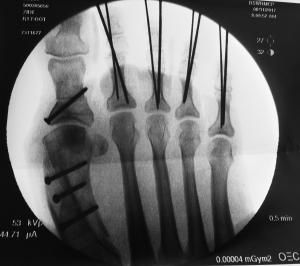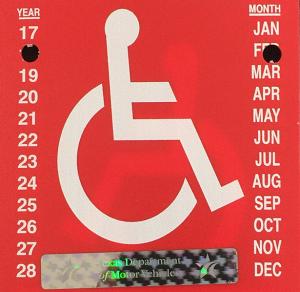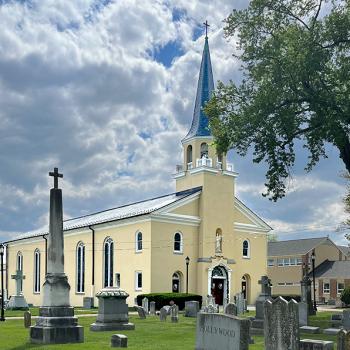Now, the group is not called The Church of the Holy Bunionectomy. But that is the role it serves in the lives of us who have joined it.

In late August, after procrastinating for over 50 years, I began the process of repairing the massive damage my inherited bunions have wrought.
My surgeon described the first procedure as a “nearly total foot rebuild.” The other foot gets the same treatment mid-November.
It’s been awful and will be awful. I know not to expect complete healing until a year from now. I’m just about totally stir crazy already and dread the days of unreal pain that I must face after the next surgery. The coming weeks of being essentially couch-bound fill me with sadness and frustration.
But in the meantime, I have found The Church of the Holy Bunionectomy, a private Facebook group, only admitting those who have had the surgery or who are investigating one.
Yes, this is a church
Now, the group is not actually called The Church of the Holy Bunionectomy, in case you decided to go looking for it. It has another name. But that is the role it serves in the lives of us who have joined it.

We share our procedures, post photos of scars and scabs and healing stages, lament together when things go wrong (unfortunately, too often with these surgeries), and cheer each other on when someone achieves a milestone of some sort.
When I managed a two-mile walk, which took a full hour, I could almost hear people from around the world clapping for me.
The goal is that all emerge from our dark places of painful boredom whole and healthy and ready to help someone else through the process.
It’s a church. We offer instruction in how to bathe, wisdom on when to restrain our activities, tips on nutrition and proper support pillows, knee carts, navigating stairs, preparing easy-to-heat meals.
We admonish one another when someone’s discouragement threatens to take them down and evangelize the explorers who are not sure they can actually take the plunge and get their feet repaired.
No one expects to stay forever in the Church of the Holy Bunionectomy
Yes, it’s a church. But here’s the thing: no one plans to stay forever. We all know that at some point, we will move on. We do make friends, and some of those friendships will probably endure. Kind of like sharing a bunker during wartime. We suffer together, often forming a strong bond.
And sometimes I wonder if churches themselves would be better off if we realized that they are meant to be transient places, like the Church of the Holy Bunionectomy. None of us wants someone else to stay stuck in the same painful situation. We all want healing and the freedom to move on.
We who do church, who count members and offerings and who serves on what committee, want people to stay and stay forever. It’s so hard to get new members. There is much grief over losing one.
But not the Church of the Holy Bunionectomy. We can rejoice when someone moves on and away. It means s/he has found what was needed and is now free to move forward.
At different points in our lives, we have different spiritual needs. There’s much ecclesiastical conversation about the Nones and the Dones. How to bring the Nones into the fold, how to get the Dones back again, etc.
Perhaps we need different expectations
What if we operated with different expectations? What if we recognized that the Nones will find us if we offer what they need at a particular time and that the Dones find health when it is time for them move to a different understanding of their religious beliefs?
What if we stopped trying to make people’s lives circle around the church and instead see the church as a companion, healer, nurturer, encourager, admonisher at certain critical points in people’s lives?
I know this means we stop empire-building where churches are concerned. It means more part-time clergy and less investment in facilities. It means re-thinking what we are about, what it means to be people who have been set free by the Gospel.
There are lots of reasons the church is losing influence in the US. In some cases, mainly when the church has married politics and has besmirched itself in the process. Then it needs to be less influential.
But I sense the rebirth of the ecclesia will take place by going smaller, not larger. By growing looser, not tighter. By offering freedom, not bondage.
I also know that everything I say is troubling to my particular denomination, The United Methodist Church.
We need big to survive. We need megachurches, not smaller gatherings, to pay giant apportionments so our Bishops and our general agencies and their staffs can get paid and their offices stay nicely furnished and their travel budgets generous.
We need to get tighter, not looser, to keep people and doctrines under control.
We need more structure, not less, to move clergy up the career ladder and make sure that pensions are funded and those who play by the rules get rewarded.
But are we the church? Are we holy? Those are the questions. The Church of the Holy Bunionectomy may have something to teach us about the answer.













